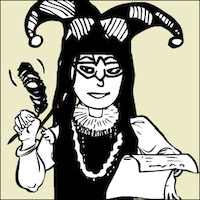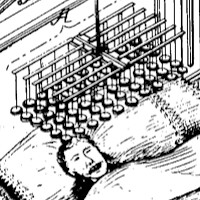Joan of Arc - Maid of Orléans

Today is May 30, the Feast of Saint Joan of Arc.
Joan of Arc was born in Domrémy, now known as Domrémy-la-Pucelle. It was named Domrémy-la-Pucelle after Joan’s nickname, la Pucelle d'Orléans or the maid of Orléans It is located in the Lorraine region of France. She was born a peasant girl and her father owned about fifty acres of farmland and supplemented his income by being a tax collector for the village.
Joan of Arc was just twelve years old when she had her first vision. She had claimed to hear the voices of Saint Michael, the Archangel, Saint Margaret, the patron saint of falsely accused people and pregnant women, which is ironic in itself as she was known as Saint Margaret the Virgin and the voice of Saint Catherine of Alexandria, also known as the Great Martyr, the patron saint of unmarried girls. Joan said that these voices told her to rescue Paris from English control and to bring the Dauphin of France to Reims for his coronation as the King of France. Dauphin is the French word for “dolphin” which is on the coat of arms for the Dauphin of France. The Dauphin is the heir apparent to the throne of France and at that time it was Charles VII. This was during the Hundred Year War when England and Burgundy controlled most of France.
Joan of Arc dressed as a man to go through the hostile English controlled territories to meet with the dauphin. She was with a party of courtiers which included the dauphin in disguise. Joan of Arc immediately recognized him and this ensured Charles VII of the “divine confirmation” of his previous uncertainty as heir to the throne. Joan was allowed to join the army for the relief of Orléans. Wearing a white suit of armor, she led the army into the town at the end of April and by June, Joan and her army had relieved the Loire of the English invasion. Then in July, in an effort to further aid the French resistance, Joan of Arc and an army of thousands, took the dauphin to Rheims through English controlled territory to be crowned Charles VII at the Cathedral. When this was accomplished, Joan found that she was on her own. Charles VII wanted nothing to do with further military exploits, including freeing Paris from English control.
Since Joan of Arc received no more help from Charles VII, she decided to go on her own and free France. She went to Compiègne to try and free it from control of the Burgundians. During the skirmish, Joan was captured and sold to the English when her family couldn’t pay the ransom and Charles VII wouldn’t pay for it either. She was eventually put on trial for heresy and sorcery and was found guilty. She was supposed to be burned at the stake on May 24 but at the last minute, she recanted everything she had said about God and the Saints talking with her.
Later, Joan of Arc formally renounced her recant and on May 30, 1431, Joan was burned at the stake. She was just nineteen years old at the time. It wasn’t until 1456 when Charles VII declared the trial should never have happened and in 1920, she was canonized by the Roman Catholic Church. Joan of Arc was put to death at the age of nineteen but her legacy as a saint and the national heroine of France will live forever.
Joan of Arc was born in Domrémy, now known as Domrémy-la-Pucelle. It was named Domrémy-la-Pucelle after Joan’s nickname, la Pucelle d'Orléans or the maid of Orléans It is located in the Lorraine region of France. She was born a peasant girl and her father owned about fifty acres of farmland and supplemented his income by being a tax collector for the village.
Joan of Arc was just twelve years old when she had her first vision. She had claimed to hear the voices of Saint Michael, the Archangel, Saint Margaret, the patron saint of falsely accused people and pregnant women, which is ironic in itself as she was known as Saint Margaret the Virgin and the voice of Saint Catherine of Alexandria, also known as the Great Martyr, the patron saint of unmarried girls. Joan said that these voices told her to rescue Paris from English control and to bring the Dauphin of France to Reims for his coronation as the King of France. Dauphin is the French word for “dolphin” which is on the coat of arms for the Dauphin of France. The Dauphin is the heir apparent to the throne of France and at that time it was Charles VII. This was during the Hundred Year War when England and Burgundy controlled most of France.
Joan of Arc dressed as a man to go through the hostile English controlled territories to meet with the dauphin. She was with a party of courtiers which included the dauphin in disguise. Joan of Arc immediately recognized him and this ensured Charles VII of the “divine confirmation” of his previous uncertainty as heir to the throne. Joan was allowed to join the army for the relief of Orléans. Wearing a white suit of armor, she led the army into the town at the end of April and by June, Joan and her army had relieved the Loire of the English invasion. Then in July, in an effort to further aid the French resistance, Joan of Arc and an army of thousands, took the dauphin to Rheims through English controlled territory to be crowned Charles VII at the Cathedral. When this was accomplished, Joan found that she was on her own. Charles VII wanted nothing to do with further military exploits, including freeing Paris from English control.
Since Joan of Arc received no more help from Charles VII, she decided to go on her own and free France. She went to Compiègne to try and free it from control of the Burgundians. During the skirmish, Joan was captured and sold to the English when her family couldn’t pay the ransom and Charles VII wouldn’t pay for it either. She was eventually put on trial for heresy and sorcery and was found guilty. She was supposed to be burned at the stake on May 24 but at the last minute, she recanted everything she had said about God and the Saints talking with her.
Later, Joan of Arc formally renounced her recant and on May 30, 1431, Joan was burned at the stake. She was just nineteen years old at the time. It wasn’t until 1456 when Charles VII declared the trial should never have happened and in 1920, she was canonized by the Roman Catholic Church. Joan of Arc was put to death at the age of nineteen but her legacy as a saint and the national heroine of France will live forever.

Related Articles
Editor's Picks Articles
Top Ten Articles
Previous Features
Site Map
Content copyright © 2023 by Vance Rowe. All rights reserved.
This content was written by Vance Rowe. If you wish to use this content in any manner, you need written permission. Contact Lane Graciano for details.







